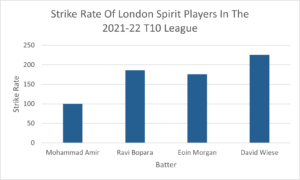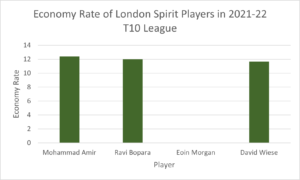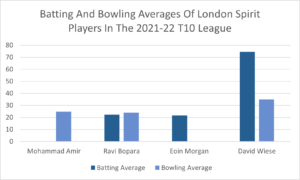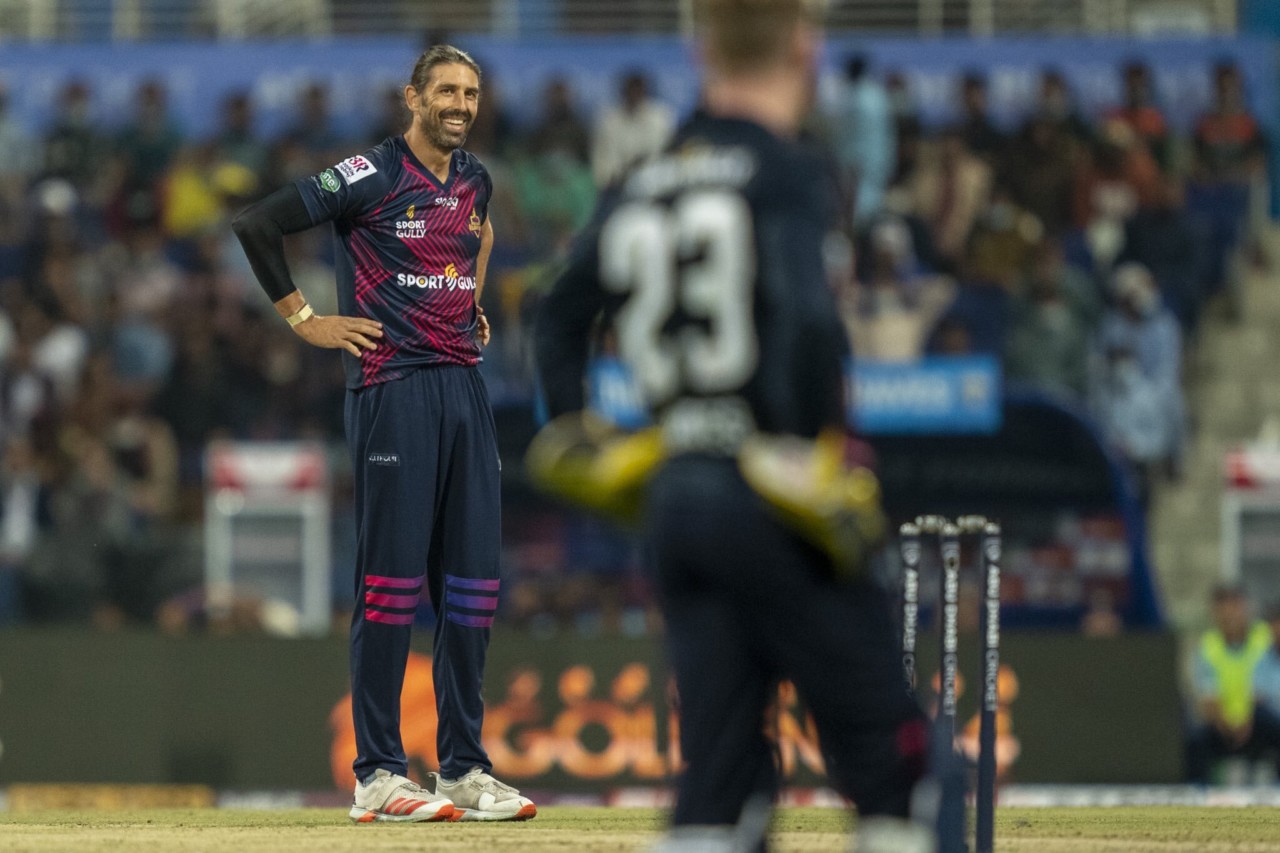The Abu Dhabi T10 League is an annual cricket tournament, which sees some of the best players on the planet come together for what is a slog-fest fiesta of batters’ heaven and boundary hitting.
The second T10 League of the year (2020’s competition was pushed back a few months because of you-know-what) has recently concluded, with the Deccan Gladiators storming to the title, thrashing the Delhi Bulls in a very one-sided final.
Well Represented Spirit
The T10 League is the shortest format of professional cricket around the world, with the newly formed Hundred competition the second shortest. This means that the skills needed to impress and dominate a game of Hundred cricket are also very desirable in T10 cricket, which resulted in a large contingent of Hundred stars being picked for the Abu Dhabi showdown.
London Spirit are the Hundred team that represent the counties of Essex, Middlesex and Northamptonshire, and despite having a disappointing inaugural Hundred campaign, finishing last, there were still four Spirit players that were chosen for this year’s T10 League.
Spirit and England limited-overs captain Eoin Morgan was selected as captain of the Delhi Bulls; fomer England all-rounder Ravi Bopara was picked for the Chennai Braves; David Wiese, the Namibian all-rounder was chosen by the Deccan Gladiators; and Mohammad Amir, the Pakistani left-arm quick was selected to play for the Bangla Tigers.
Which Spirit Star Struck Best?
As a batter, because an innings lasts only 60 balls, how many runs each individual scores in an innings isn’t so important, rather how quickly they score them; scoring 30 runs off 15 balls is more useful to the team than scoring 50 runs off 50 balls. A batting strike rate is calculated by dividing the number of runs a player has scored by how many balls they’ve faced, then multiplying by 100.

What can be determined from this graph is that Wiese scored the most runs per ball faced out of the four players. We can also see that Mohammad Amir was the least effective batter, but because the Pakistani is a bowler, he isn’t known for his batting and he’s only really in the team for his impact with the ball.
Bopara, Morgan and Wiese are all middle-order batters, so they all have the same role of coming out to bat quite late in the innings, in order to be destructive in the closing overs and essentially score as many runs as they can off as few balls as possible.
Best Bowling Spirit?
On the other end of the spectrum is the bowling performance. Similarly to batting, because there are only 60 balls in an innings and each bowler is only allowed to bowl a maximum of two overs, it’s considered more important to not concede runs than to take wickets. It’s more beneficial to your team if a bowler goes wicketless in an over and concedes five runs than if an over goes for 15 runs but a wicket has been taken.
The best way to measure this is to look at bowler’s economy rates. This is also sometimes called a run-rate and is simply calculated by dividing the number of runs conceded by the number of overs bowled, so in this case the lower the number the better.

This graph shows that the three players who bowled all averaged around 12 runs per over, with Wiese having marginally the best economy rate. Morgan’s non-existent bar in this graph doesn’t mean that the overs he bowled went for 0 runs on average, which would be incredibly impressive, rather it means he just didn’t bowl at all. Like Amir, who wasn’t in the Bangla Tigers team for his batting, Morgan isn’t in the Delhi Bulls team for his bowling so he doesn’t have any statistics for it.
Best Averages?
None of this means to say that scoring lots of runs and taking lots of wickets aren’t important. Fundamentally, scoring the most runs is still the way to win a cricket match, so despite a player’s average being less significant than in red-ball cricket where there is no over limitation, looking at players’ averages is still a good way to judge performances.
A batting average is the number of runs you score divided by the number of times you get out, so theoretically means how many runs you score per innings. A bowling average is how many runs you concede per wicket you take. This means in an ideal world you’d want a high batting average, with a low bowling average.

This shows that Wiese had both the highest batting (best) and bowling (worst) averages out of the London Spirit contingent, with Bopara’s batting average being very similar to Morgan’s and his bowling average being very similar to Amir’s. Amir has no batting average because he never got out while batting; in his only batting appearance he finished unbeaten on three not out.
Main image: T10 League




